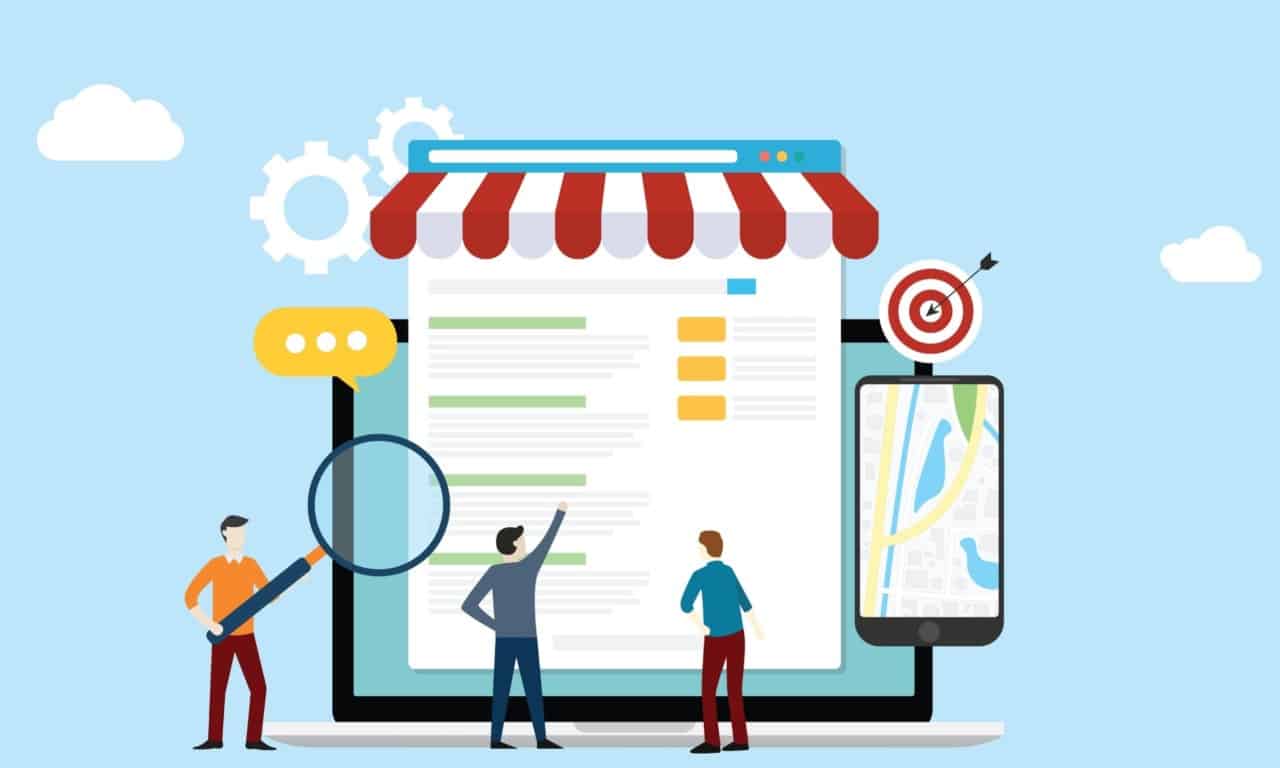A sound local digital marketing and local listing management strategy is essential as your business expands with new locations in other towns and cities, states, and countries.
Here are a few tactics to help you establish your brand presence in your given local communities:
- Claim your business’s local listings
- Manage online reviews
- Use social media to reach out to local groups
- Create a local SEO strategy

Downloaded the report? How to Interpret Your Reputation Score
Local Digital Marketing Step 1: Claim Local Listings
Claiming your local listings helps establish and grow your digital brand presence. Ideally, you should get started on the websites on this business directory list: Google, Yelp, Facebook, and Tripadvisor.
- According to local SEO statistics, roughly 75% of new business is influenced by only a handful of business review sites and directories: Google, Facebook, Yelp, Tripadvisor, Apple Maps, and Bing Maps.
- According to a report by Forrester, 80% of multi-location marketers admit that location information on third-party sites has a major impact on their brand’s reputation.
When you start creating your listings, make sure the information you add is correct and up-to-date. Wrong or outdated information is an easy barrier to entry and leads to poor customer experiences even before people walk through the door.
If you’re managing a brand with multiple business locations, investing in a local listing management solution and a local search rank checker can save your business time and money as you work on updating your information across multiple digital properties.
Local Digital Marketing Step 2: Manage Online Reviews
Often, your local listings will also contain online reviews generated by customers. These reviews are vital to attracting local attention. According to customer reviews data:
- 60% of marketers agree that what customers see on social media and online review websites influences their decision to visit a store and make a purchase.
- Customers don’t trust companies with lower than 4-star ratings. According to online reviews statistics, the most common filter applied is to see only companies with 4-star ratings and higher.
- 92.4% of consumers use online reviews to guide most of their ordinary purchasing decisions.
As part of your online review management strategy, you should learn how to respond to negative reviews and positive feedback. This shows that you care about what people have to say about your brand, helping foster consumer trust and engagement.
Review responses are vital to local digital marketing success. In fact, 79% of marketers see the ability to set up and manage service-level agreements for review responses as the most valuable feature to have when optimizing localized marketing efforts.
- Related reading: Google Reviews: The Complete Guide for Businesses
Local Digital Marketing Step 3: Use Social Media to Engage Locally
Apart from responding to reviews, you can also harness social media as part of your local digital marketing toolkit: it’s a great platform for driving engagement with consumers. Consider the stats below:
- 86% of consumers increasingly look for local business information on search engines and social media properties.
- 40% of digital consumers use social media to research new brands or products.

On your Facebook Page and Instagram profile, try something other than posting deals or announcements. Use tried-and-true community management best practices to effectively engage on a local level.
Learn to “read the room” and use the right messaging and graphics to tell a story or educate the audience. While this can be challenging if you’re managing different accounts for multiple locations, you can use tools like Hootsuite reputation management software, which lets you create content for multiple business locations — even multiple brands — at once.
Local Digital Marketing Step 4: Execute a Local SEO Strategy
With local listings and social media accounts squared away, you can round off your local digital marketing strategy with local SEO tactics.
Having your listings set up correctly already contributes to this step. In addition, combining reviews and SEO together can help you rank higher when it comes to local search results.
Follow local SEO best practices to secure high search rankings when people search online to find businesses like yours. Optimize your website to provide search engines with the right local search signals. Add your (Name, Address, and Phone number) NAP information. You may even consider writing and publishing location pages, which could boost the local signals you are sending search engines.
Related reading: Google Maps Pack Strategies to Help You Rank

Conclusion
There are many cogs that keep a local digital marketing strategy going, but it doesn’t take much to get started. If you’re managing multiple business locations, consider investing in reputation management software to make every step of the process easy.
When done correctly, you’ll have more loyal customers that will help you spread brand influence with their friends and to new places where you can set up more locations.
